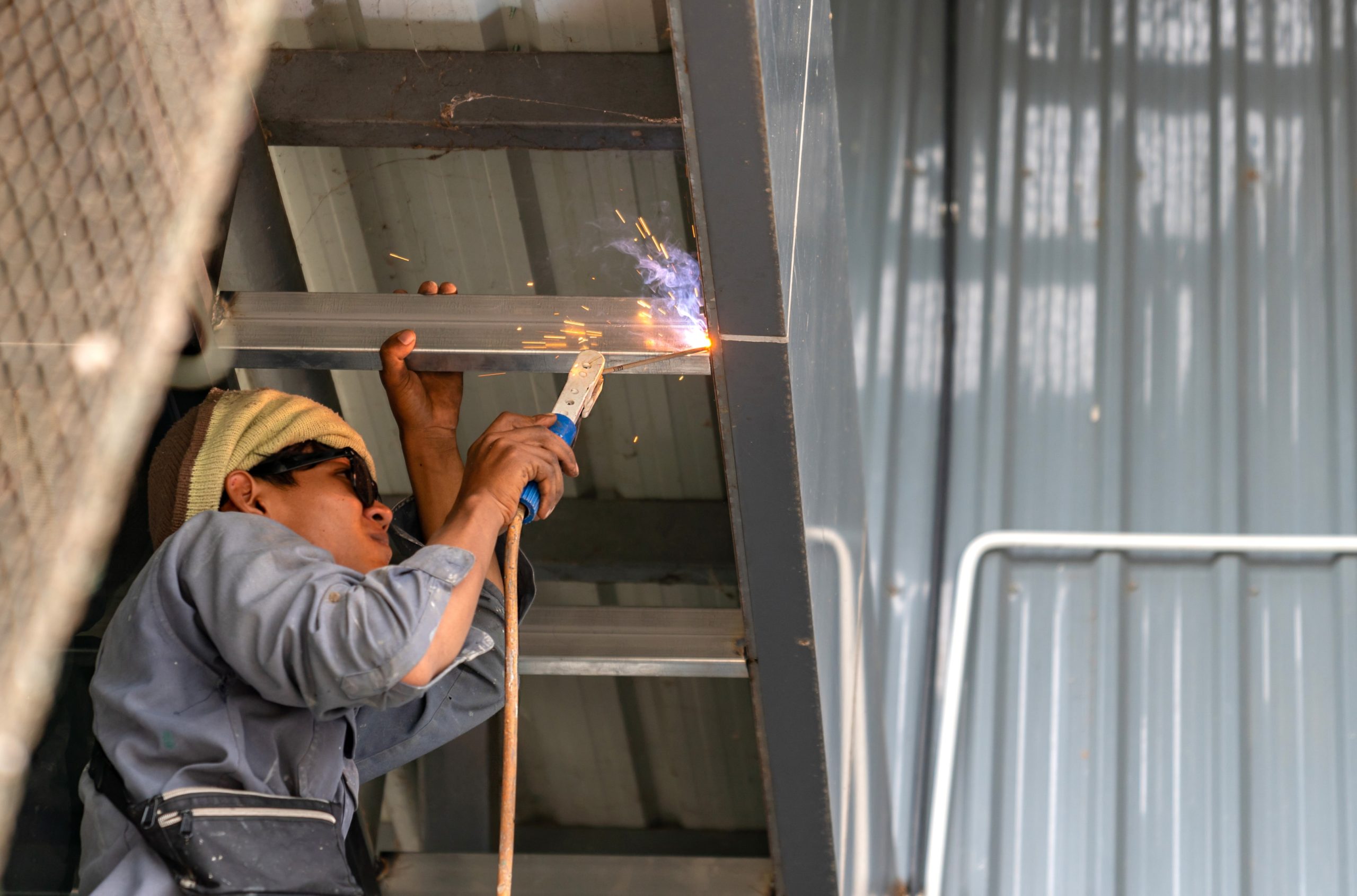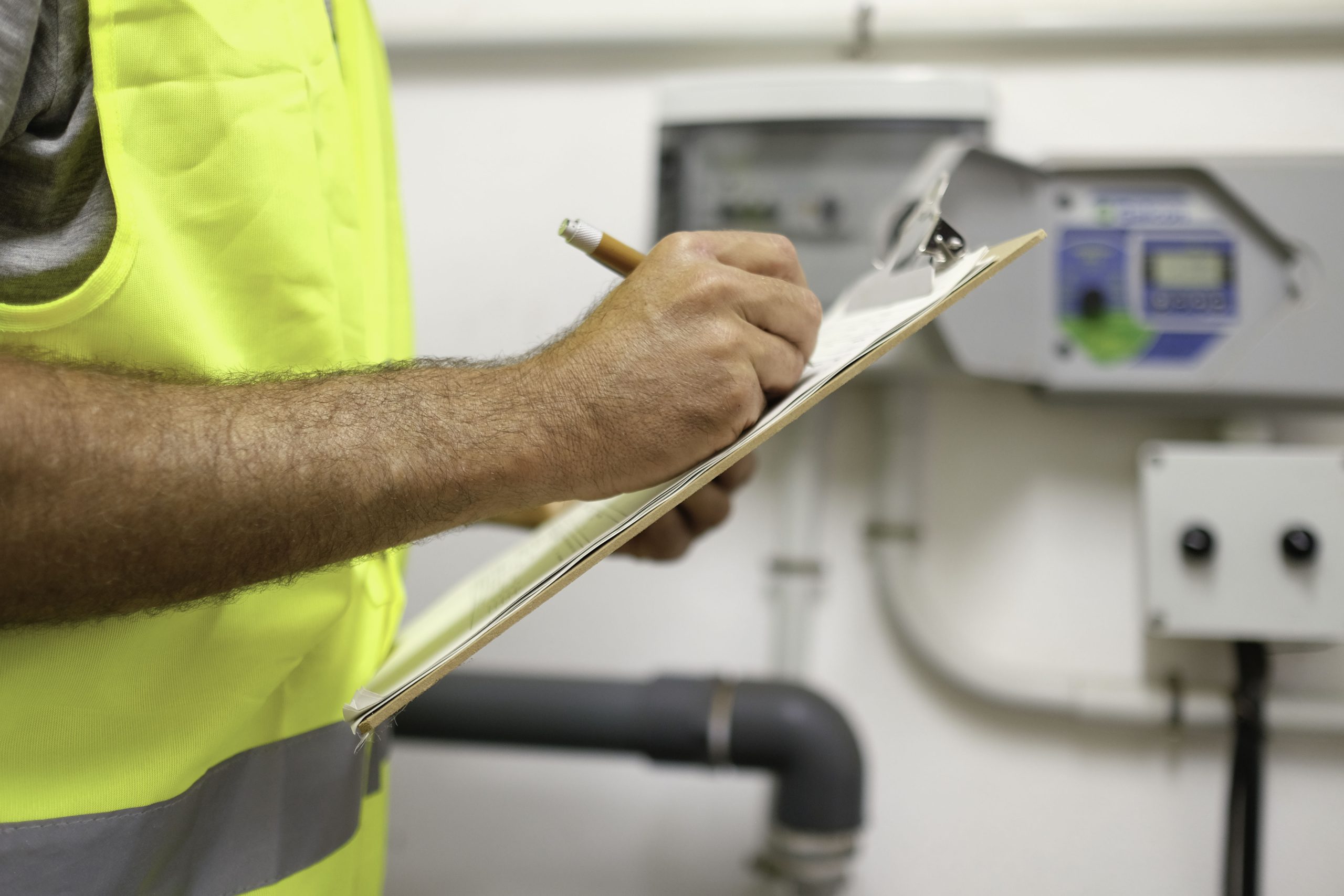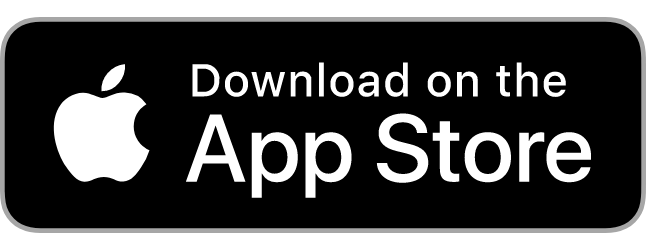Managing healthcare facilities, including hospitals, clinics, and nursing homes, is not a one-person job. It’s like running an apartment, but instead of just keeping people comfortable, you’re responsible for their health and safety.
You need to make sure everything meets the compliance rules, you’re not wasting money, and you’re preventing infections from spreading. For example, air quality has to be top-notch, especially for patients who have trouble breathing. You need to be smart about how you spend money so you can give patients the best care.
Here are eight effective healthcare facility management strategies to help you successfully manage your facility.
1. Prioritize Preventive Maintenance
Regularly checking and servicing your equipment and facilities helps you stay ahead of problems and avoid surprises. In a hospital, equipment like ventilators and sterilizers aren’t just tools—they’re lifesavers. Maintaining equipment guarantees you don’t risk compromising patient care.
Addressing issues early prevents breakdowns, keeps services uninterrupted, reduces costly emergency repairs, and extends the lifespan of your equipment. This proactive mindset keeps your facility operational and ensures patients receive uninterrupted care.
Here are a few things you can do to prioritize preventive maintenance:
- Schedule regular assessment: Regularly inspect your HVAC systems and medical equipment.
- Use a system to stay organized: Utilize maintenance software to track all your tasks and monitor progress.
- Train your staff to identify potential problems. Teach them to recognize the early warning signs of equipment failures.
By implementing a proactive maintenance program, you create a more reliable and efficient environment for everyone.
2. Maintain Regulatory Compliance
Healthcare facilities need to follow strict rules to keep patients and staff safe. Falling short can mean fines, interruptions to daily operations, or worse, putting patient safety at risk. Staying compliant means making sure your facility is a safe, reliable place where patients receive exemplary health care.
Key Focus Areas
Focus on air quality and ventilation to maintain a safe environment. Keeping HVAC systems in top shape ensures clean air flows throughout the facility, helping to control infections and keep patients comfortable.
Healthcare devices must also meet high standards. Regular inspections and calibrations guarantee devices provide accurate and reliable results, which is critical for patient care.
Additionally, conducting routine safety checks for structural elements like floors, handrails, and lighting helps identify and address hazards before they escalate into significant issues.
Steps to Stay Compliant
To stay on top of compliance, set up a calendar to track inspection dates and deadlines. This helps you avoid missed checks and keeps your operations problem-free. Document all maintenance and safety activities meticulously so that everything is ready for regulatory review.
Lastly, make sure your staff stays updated on the latest protocols and best practices through regular training and communication. These steps help your facility and maintenance teams meet regulatory standards.
3. Leverage Technology for Centralized Management
Centralized management systems pull together everything from scheduling to task tracking, helping teams save time and avoid common mistakes.
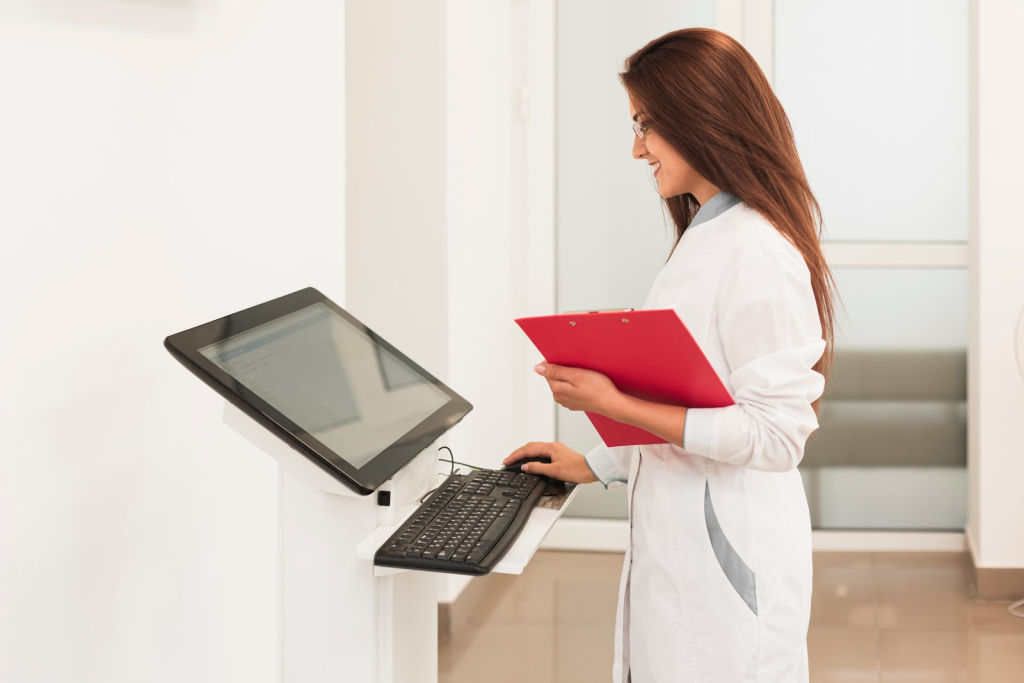
A major perk of centralized platforms is keeping everyone on the same page. With real-time updates, your team can track maintenance requests, set schedules, and follow up on progress without juggling multiple tools. This same technology gets rid of old-school processes like paper logs or spreadsheets, which are often slow and at risk of error.
Technology boosts transparency and accountability by making it easier to track who’s doing what and when. Managers can check the status of tasks, spot hold-ups, and shift resources to where they’ll have the most impact.
Modern platforms with analytics give you more access to actionable insights, helping you see trends and make decisions based on real data.
4. Develop an Infection Control Plan
Keep your healthcare facility clean and safe to protect everyone from infections. An infection control plan acts as your step-by-step guide to reduce risks and keep hygiene standards in check.
First, identify which areas in your facility are most at risk for contamination. Patient rooms, operating theaters, and waiting areas usually top the list. After identifying high-risk spots, create a cleaning schedule that prioritizes them. Use hospital-grade disinfectants and follow the recommended usage guidelines.
Good ventilation is also necessary. Keep your HVAC systems in top shape to filter the air properly and cut down on airborne germs. Check and replace air filters on schedule to maintain system efficiency.
Do not overlook staff training. Make sure your team knows how to practice hand hygiene, dispose of waste safely, and wear protective gear when necessary. Offer workshops and updates to keep everyone prepared to handle infection risks.
A strong infection control plan meets regulatory standards and creates a safer space for patient recovery and staff confidence.
5. Practice Energy Efficiency
Healthcare facilities can implement the following practices to reduce energy use and cut operational costs, including utility bills and maintenance expenses.
Upgrade Equipment and Systems
Outdated equipment can drain more power and money than you realize. Replace old lighting, HVAC units, or medical machinery with energy-efficient options to see significant improvements.
LED lights use less energy, last longer, and offer better illumination than traditional bulbs. Replacing outdated equipment may require an upfront cost, but the long-term savings justify the investment.
Conduct Energy Audits
Identify where your facility wastes the most energy by conducting an energy audit. An audit reveals where power usage peaks and uncovers issues like poor insulation or inefficient equipment. Address these issues once identified to reduce energy waste and save money.
Optimize Daily Operations
Small adjustments can contribute to the efficient operation of healthcare facilities. Set thermostats to match real usage patterns and avoid heating or cooling unused spaces. You can also ask staff to power off equipment when not in use to avoid unnecessary energy use. These simple tweaks can add up to noticeable savings over time.
Explore Renewable Energy Sources
Consider long-term energy solutions such as solar panels or wind power. Even though the initial cost may be higher, these options offer excellent long-term value through cost savings and environmental benefits.
6. Create Emergency Response Plans

Emergencies like equipment failures or natural disasters can disrupt care and operations. Preparing emergency plans guarantees patients remain safe, staff know their roles, and critical systems stay functional.
Here are the steps to create energy response plans:
Identify Potential Risks
Pinpoint what could go wrong at your facility. Consider risks like power outages disrupting life-saving equipment, severe weather causing physical damage, or cybersecurity breaches compromising patient data. Address these risks by detailing how to respond and mitigate each scenario.
Develop Clear Protocols
Lay out clear, step-by-step actions for emergencies. For example, during a power outage, your plan might include turning on backup generators, informing staff, and ensuring vital equipment keeps running. Keep these instructions simple and easy for everyone to access.
Train Your Team
Train your team regularly on emergency protocols. Run practice drills so everyone knows their role and feels confident during real emergencies. Training makes sure staff can act quickly during emergencies, reducing confusion and delays.
Maintain Emergency Equipment
Check and maintain emergency systems, like backup generators, fire alarms, and critical medical equipment. Regular maintenance and inspections guarantee that everything works during emergencies.
Emergency planning equips your facility to handle crises, prioritizing patient safety and operational continuity.
7. Optimize Vendor Management
Managing vendors well helps your healthcare facility get quality services at reasonable costs. Vendors manage tasks like maintaining medical apparatus and overseeing hospital building infrastructure. How do you do this?
- Do your homework before choosing a vendor. Check their certifications, performance history, and industry reputation. Choose vendors with healthcare experience, as they are familiar with the strict demands and regulations in this field.
- Define service delivery standards, response times, and performance benchmarks. Use detailed contracts to outline responsibilities, including deadlines for routine maintenance or urgent repairs.
- Stay in regular contact with your vendors. Schedule regular meetings to evaluate performance, address concerns, and provide feedback. This helps maintain alignment and quality healthcare services.
You can also use vendor management software like Trillium to track tasks, check performance, and monitor compliance. This centralization highlights successful areas and identifies where improvements are necessary.
Contact Trillium to learn how the software can benefit your organization.
8. Monitor Performance Metrics
Keeping track of performance metrics helps you see what’s working and what needs fixing in your healthcare facility. It gives you a clear view of how systems and processes perform.
Keep an eye on equipment and staff downtime. Track how often and how long medical equipment is out of service to spot patterns and schedule maintenance before problems grow. Metrics like task completion rates and response times show if workloads are balanced and processes are running smoothly.
Patient satisfaction surveys and complaints can highlight areas like cleanliness or staff responsiveness that need attention. Additionally, go over inspection reports and audits to make sure your facility meets all regulatory requirements.
Tracking these metrics helps healthcare facilities improve the experience for patients and staff.
Keep Healthcare Facilities Running Smoothly With Trillium
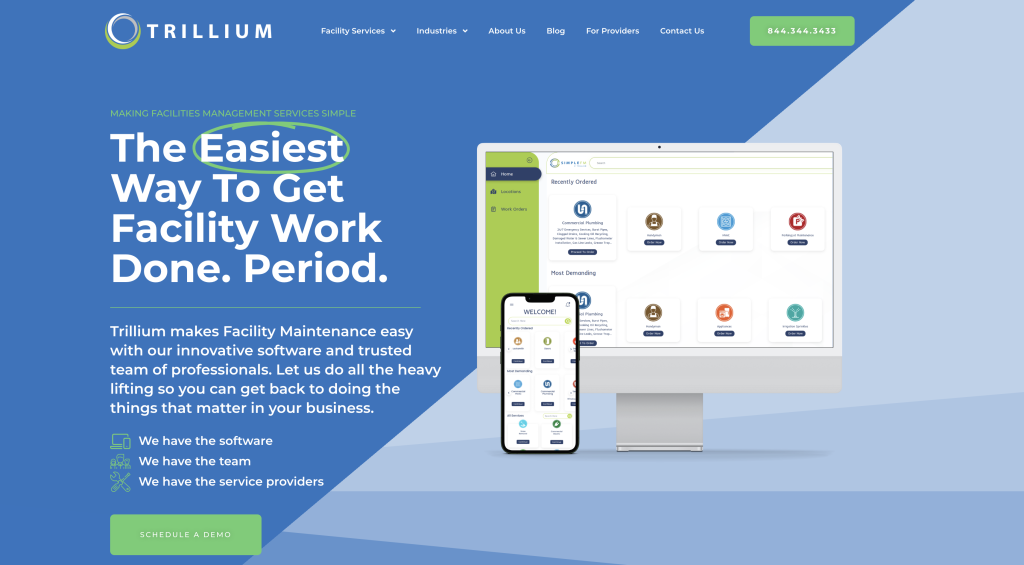
Trillium makes it easier to implement these strategies by providing centralized tools and preventive maintenance solutions.
Our solution is completely free to use. We don’t charge high markups and require on-site personnel. You can order the services you need exactly when you need them.
Trillium handles scheduling, dispatching, and vendor coordination, so you can focus on managing big projects and solving critical problems. The software gives you the tools to keep your facility safe, efficient, and compliant.
Ready to see how much easier healthcare facility management can be?
Call us at (844) 344-3433 for inquiries. You can also download the Trillium app for free!
FAQs About Healthcare Facility Management
Is CHFM certification worth it?
Yes, the certified health care facility manager (CHFM) certification demonstrates expertise in healthcare facility management. It enhances credibility and can open doors to career advancement.
What is the critical role of facility management?
Facility management keeps hospitals and healthcare facilities efficient and safe. It involves maintaining health systems, ensuring compliance, and creating a functional environment for patients and staff.
What are the four main functions of a facility manager?
The four main functions of a facility manager include maintaining operations, ensuring regulatory compliance, managing resources, and overseeing safety and emergency preparedness.
Who manages a healthcare facility?
Healthcare facilities are managed by facility managers or healthcare facility management teams. They often rely on service providers like Trillium for specialized maintenance and support.





